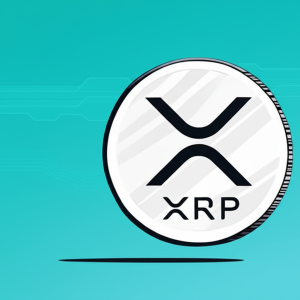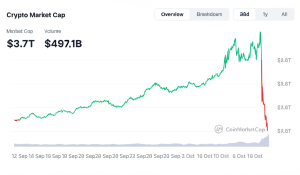
Visa’s Bold Leap into the Stablecoin Future
Embracing the Digital Frontier
The financial landscape is undergoing a seismic shift, and Visa, a titan in the payments industry, is at the forefront of this transformation. By venturing into the realm of stablecoins, Visa is not merely adapting to the digital age; it is actively shaping the future of global finance. Stablecoins, digital currencies pegged to the value of traditional assets like the US dollar, offer a stable and efficient medium for transactions. Visa’s strategic move to integrate stablecoins into its settlement platform is a bold step towards creating a more inclusive, efficient, and interconnected financial ecosystem.
Expanding the Stablecoin Ecosystem
Visa’s commitment to the stablecoin ecosystem is evident in its recent expansions. The company has announced support for three new stablecoins and two additional blockchains, effectively doubling its stablecoin capabilities. This expansion includes a partnership with Paxos, a leading blockchain platform, which enables Visa to offer settlement support for stablecoins. By supporting four stablecoins across four blockchains, including Ethereum and Solana, Visa is fostering interoperability and choice. This approach ensures that the platform can cater to the diverse needs of its global user base, from individual consumers to large enterprises.
Strategic Partnerships: A Key to Growth
Visa’s strategy is underpinned by strategic partnerships with key players in the crypto space. Collaborations with Worldpay and Nuvei demonstrate how Visa’s USDC settlement capability can offer more efficient and cost-effective payment solutions to merchants. These partnerships are crucial for driving adoption and showcasing the real-world benefits of stablecoin integration. In the Central and Eastern Europe, Middle East, and Africa (CEMEA) region, Visa’s partnership with Yellow Card, a prominent pan-African fintech company, highlights its commitment to expanding stablecoin initiatives in emerging markets. This collaboration underscores the potential of digital currencies to transform financial services in regions where traditional banking infrastructure may be limited.
The Vision: A Stablecoin-Powered Future
Visa’s vision extends beyond mere integration; it envisions a future where every institution that moves money will need a stablecoin strategy. This perspective reflects a deep understanding of the transformative potential of stablecoins. By settling transactions in stablecoins, Visa aims to eliminate the lengthy currency conversion processes and costly international wire transfers that have long plagued the traditional financial system. CEO Ryan McInerney’s emphasis on testing and implementing stablecoins highlights the company’s dedication to innovation and its belief in the power of digital currencies to revolutionize cross-border payments.
Real-World Applications and Benefits
The integration of stablecoins into Visa’s network offers numerous benefits for businesses and consumers alike. For merchants, stablecoin settlements can lead to faster access to funds, reduced transaction fees, and increased efficiency in payment processing. Consumers can benefit from lower costs, greater convenience, and access to a wider range of payment options. Visa’s pilot programs have demonstrated the practical applications of stablecoins in various scenarios, showcasing their potential to streamline treasury operations and improve cash flow management. By enabling clients to fulfill their VisaNet settlement obligations using stablecoins, Visa is paving the way for a more efficient and inclusive financial system.
Challenges and Considerations
While Visa’s foray into stablecoins is promising, it is not without challenges. Regulatory uncertainty remains a significant hurdle, as governments around the world grapple with how to regulate stablecoins and other digital assets. Security is also a paramount concern, as stablecoins are vulnerable to hacking and other forms of cybercrime. Furthermore, the scalability and interoperability of different stablecoins and blockchains need to be addressed to ensure seamless integration into Visa’s global payment network. Visa’s commitment to embracing multiple stablecoins and blockchains is a step in the right direction, but ongoing efforts are needed to foster greater collaboration and standardization within the industry.
Impact and Future Outlook
Visa’s entry into the stablecoin arena has the potential to significantly impact the broader financial landscape. By lending its credibility and vast network to stablecoins, Visa is helping to legitimize this emerging asset class and drive its adoption among mainstream users. This move could also spur innovation in the payments industry, leading to the development of new and more efficient payment solutions. Looking ahead, Visa is likely to continue expanding its stablecoin initiatives, forging new partnerships, and exploring new use cases. The company’s focus on interoperability, security, and regulatory compliance will be crucial for ensuring the long-term success of its stablecoin strategy. As the stablecoin ecosystem continues to evolve, Visa is well-positioned to play a leading role in shaping its future.
Conclusion: A Paradigm Shift in Payments
Visa’s expansion into stablecoin settlement support represents a paradigm shift in the world of payments. By embracing digital currencies and integrating them into its existing network, Visa is not only adapting to the changing landscape but also actively shaping the future of finance. This move has the potential to revolutionize the way we transact, making payments faster, cheaper, and more accessible for everyone. As Visa continues to innovate and collaborate with key players in the crypto space, the future of stablecoin payments looks brighter than ever. The journey towards a stablecoin-powered future is just beginning, and Visa is leading the charge.





